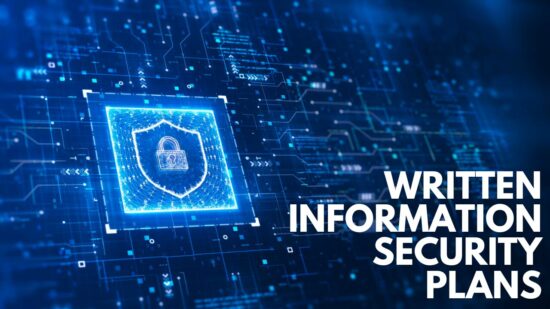The digital age has greatly expanded the range of opportunities and avenues of attack for hackers to penetrate your IT security defenses and gain access to critical business systems and applications. Many of these breaches are the result of weak security defenses and poor email usage practices.
Malware infections can be particularly devastating for businesses. By interrupting critical workflows and stealing or encrypting crucial data, malware can cause serious financial and reputation damage.
According to one report, 66 percent of malware enters enterprise networks through email attachments.
Therefore, the importance of implementing solid email security defenses and best practice measure can’t be overstated, particularly considering the extensive use of email for day-to-day business communications.
At the same time, today’s threats are becoming increasingly more sophisticated as cyber criminals create more dangerous variants of ransomware and malware, along with more devious phishing schemes. Whether caused by software failure or human error, a single malware attack can prove catastrophic for businesses of any size.
While there is no silver bullet method for preventing all malware attacks, there are reliable, best practice measures to detect and block threats. These baseline methods provide a solid framework for helping to protect sensitive business systems from unwanted intrusions without hampering productivity.
Install anti-virus software
Anti-virus and spam filtering tools offer an effective front-line defense in helping to prevent malicious malware, ransomware and other viruses from sneaking into your network and infecting your applications and systems. These programs scan your email and attachments, checking for vulnerabilities as they enter your inbox. If malicious content is identified, the software will alert users of the suspicious content and typically will quarantine the affected email to prevent it from being inadvertently released. It is your responsibility to check your security settings on your spam filter and enable the specific options you need. You can often change the settings to block out any emails that contain specific words or phrases, which can be helpful in guarding against specific types of scams or email phishing schemes. To help defend against the latest threats and vulnerabilities, make sure your anti-malware software is consistently updated with the latest definitions.
Use secure authentication
Once an access point is compromised, attackers will often reuse the password to gain access to other systems. Authentication will help obstruct these attempts no matter how the hacker gains access to the password. Options within your email client typically give you a range of authentication capabilities. While the concept is simple, authentication offers a highly effective data loss prevention technique. For a more streamlined security approach, consider consolidating your authentication, encryption, and advanced threat protection into a single security suite. Compared with point tools, these integrated systems require a fraction of the IT resources required to maintain effective threat protection.
Keep software updated
While no system or application is completely safe against malware attacks, software providers regularly provide patches and updates to close any new vulnerability that may emerge. As a best practice, validate and install all new software patches and check for signs of malware in log reports. Be sure to implement routine maintenance including updating your operating systems, software tools, browsers and plug-ins. Make backups of all your data and software on a storage device that is not attached to your network or computer. Confirm that all your backups are operating properly and test them on a regular basis to make sure they will perform when you need them. Also, don’t overlook your email servers, which are a frequent target of hackers. Make sure your IT team has all the necessary tools and information to effectively secure your email servers.
Safeguard email with encryption
Popular email platforms like Gmail and Outlook typically don’t have sufficient enterprise-level encryption capabilities to fully protect applications and systems against all cyber threats. Third-party add-in encryption services can close these corporate email security gaps, helping to safeguard information in transit and on endpoint devices. For even greater protection, consider full-disk encryption, which encrypts the complete hard drive, safeguarding the data as well as the applications and operating system. Keep in mind that some encryption services can add friction to the user experience. Any encryption tool is only effective if users can easily make it a part of their regular workflow. Carefully weigh your options by testing trial versions before making a final decision.
Monitor for suspicious activity
Proactive email scanning can identify vulnerabilities and provide reports on detected gaps in security and recommendations for security patches or vendor updates. These reports describe the types of risks found and a potential cause for each area of vulnerability. Many of today’s leading email monitoring solutions will monitor all user accountsfor suspicious activity and provide an alert if there is any reason for concern. Core capabilities typically include: logging all incoming and outgoing traffic; baselining normal user activity and proactively looking for aberrations; and promptly investigating unusual actions. Network monitoring can also be used to confirm the health of software and firmware throughout system startup, operation and during sensitive upgrade periods.
Educate end-users
While implementing the right technology is important, it’s not the entire solution. The users who interface with your business systems must also be educated on how to perform their tasks. Work with your internal team to define and implement policies and practices based on your usage preferences and requirements or mandates specific to your particular market. Create a culture in which people talk about security, and make security a clear priority. Teach users about secure online practices such as how to recognize potential threats and phishing attempts.
Continue to build awareness of malware risk attacks and check user awareness with in-house hacking attempts and interactive security activities. Make sure policies and procedures are consistently enforced.
- Keep users informed on the latest cybersecurity threats and best practice security techniques.
- Educate users on how to identify phishing schemes and what to do if a hidden threat is uncovered.
- Empower and encourage users to be proactive in reporting suspicious behavior.
- Instruct users on how to use secure networks and follow best practice processes when working remotely.
Staying ahead of today’s advancing threats
Safeguarding your vital IT and enterprise infrastructure is not just a security concern; it is a fundamental business issue. It requires an intelligent investment in resources to meet an increasingly complex threat landscape.
While building an effective email security framework is a long-term process, you cannot afford to hesitate. Cybercriminals are constantly looking for new ways to break through your defenses, which is why you need a solid technology foundation, combined a strong culture of awareness and responsiveness to today’s evolving threats.







